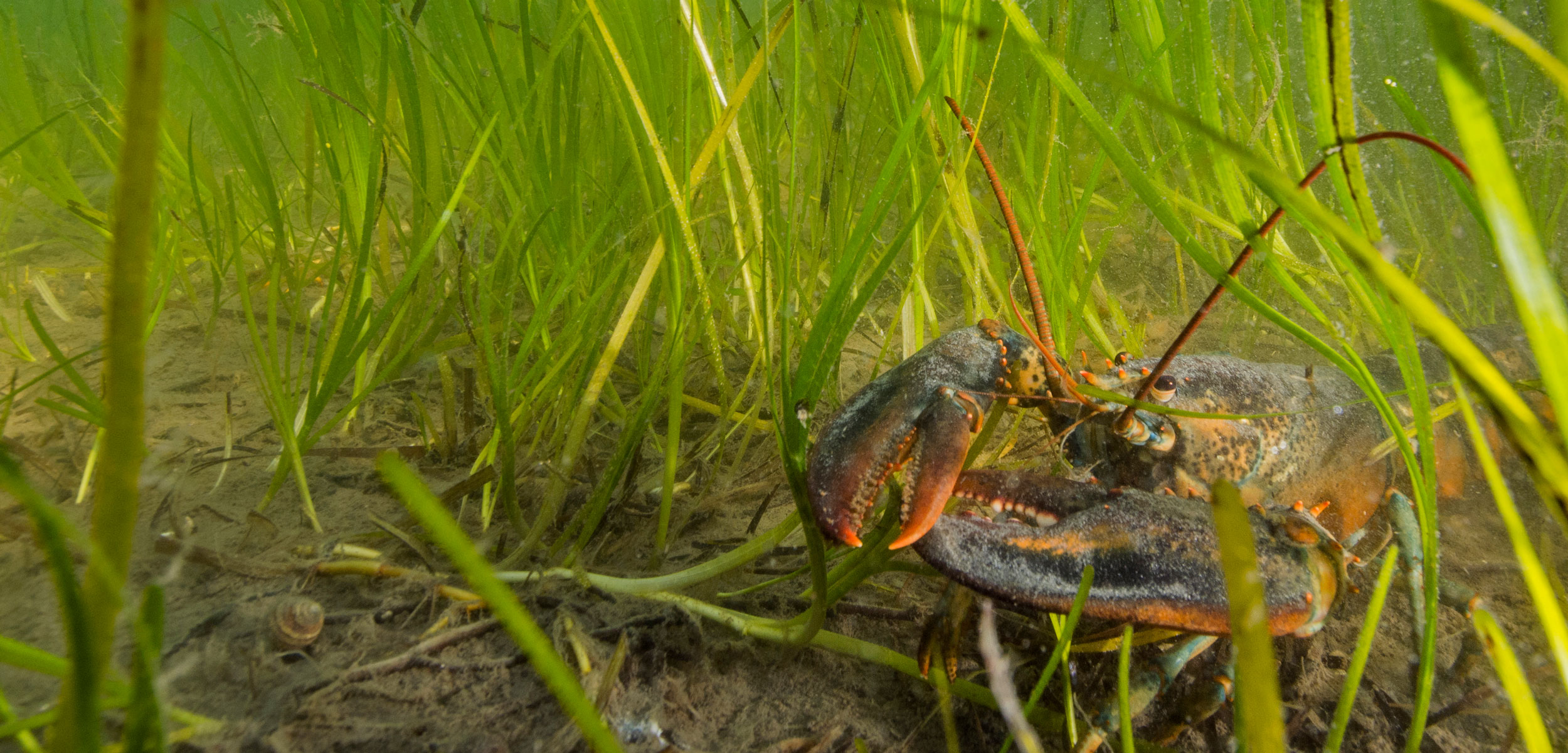Near Fish Farms, Lobster Catches Plummet
Proximity to open-net-pen aquaculture seems to have a big influence on the lobster catch in southwestern Nova Scotia.
Article body copy
Lobster fishers catch fewer market-sized lobsters, and see fewer fertile females, in areas close to fish farms in Nova Scotia, according to new research led by Inka Milewski, a research associate at Dalhousie University in Halifax.
Lobster fishers working in Port Mouton Bay, Nova Scotia, keep detailed records of when and where they fish and how many lobsters they catch. By analyzing 11 years of fishers’ records, Milewski and her colleagues found that the reduction in catch was greatest in the areas closest to open-net-pen aquaculture sites and lowest in the areas farthest away. On average, the scientists calculated a 42 percent drop in the lobster catch and a 56 percent drop in observed egg-bearing females in years when the fish farms were active in the bay.
Though catch numbers in areas farther from fish farms recovered slightly in fallow years, they dropped again when fish returned to the pens. Lobster catches, however, stayed low in areas closest to the fish farms, whether or not they were operating.
The study highlights the need to balance the competing interests of two of the region’s major industries: lobster fishing, which pulls in CAN $2-billion a year and is an iconic piece of Atlantic Canadian culture, and aquaculture—predominately salmon—which is a $350-million-a-year business and growing rapidly.
Many factors affect the lobster catch, Milewski says, but she and her team isolated the effects of the fish farms. They showed that water temperature—typically the most important variable affecting lobster catches—remained relatively stable over the years when there were fish in the pens and when there were none. The researchers also controlled for differences in catch rate caused by lobster molting, wind, and fishing effort.
While the study did not definitively identify how the fish farms affected the lobster catches, Milewski suggests chemical plumes and fecal matter from the farms may damage the water quality in a way that harms lobsters. “Dissolved sulfides and ammonia from farms can have behavioral and toxic effects on lobsters, especially berried [egg-bearing] females,” she says. “It’s likely these changes in water and habitat quality are affecting catch rates.”
The finding aligns with observations from lobster fishers in other parts of Atlantic Canada who have reported lower catches in areas close to salmon farms. Aquaculture operations established in Passamaquoddy Bay, New Brunswick, for instance, led to negative impacts reported by fishers two years later: egg-bearing lobsters and herring began avoiding the area, scallop and sea urchin shells became brittle, and scallop meat and sea urchin roe became discolored. Melanie Wiber, an anthropologist at the University of New Brunswick, documented those reports in a 2012 study. She says the problems observed arose predominately in the second year of salmon production, when pesticides to control sea lice are commonly used.
Previously, fish farm pesticides have been documented killing lobsters, crabs, and shrimp, Wiber says. Milewski’s study, however, did not gather any data on pesticide use at the Port Mouton Bay operation, so whether it contributed to the drop in lobster catches is unknown.
Wiber and her colleagues recently completed a separate three-year study of lobster abundance around aquaculture sites in southwestern New Brunswick. But while some of the results suggest that fish farms hurt lobster catches, overall the study was inconclusive—in part because there is so much aquaculture activity in the area that it was difficult to find sites far enough away to use for comparison.
Milewski says fisheries managers will need to take into account the impact of fish farms on wild fisheries. But, she notes, this problem is just one among many facing wild lobsters and the people who depend on them. “Climate change and ocean acidification are issues, too,” she says. “Managers need to include all of this in their plans.”

